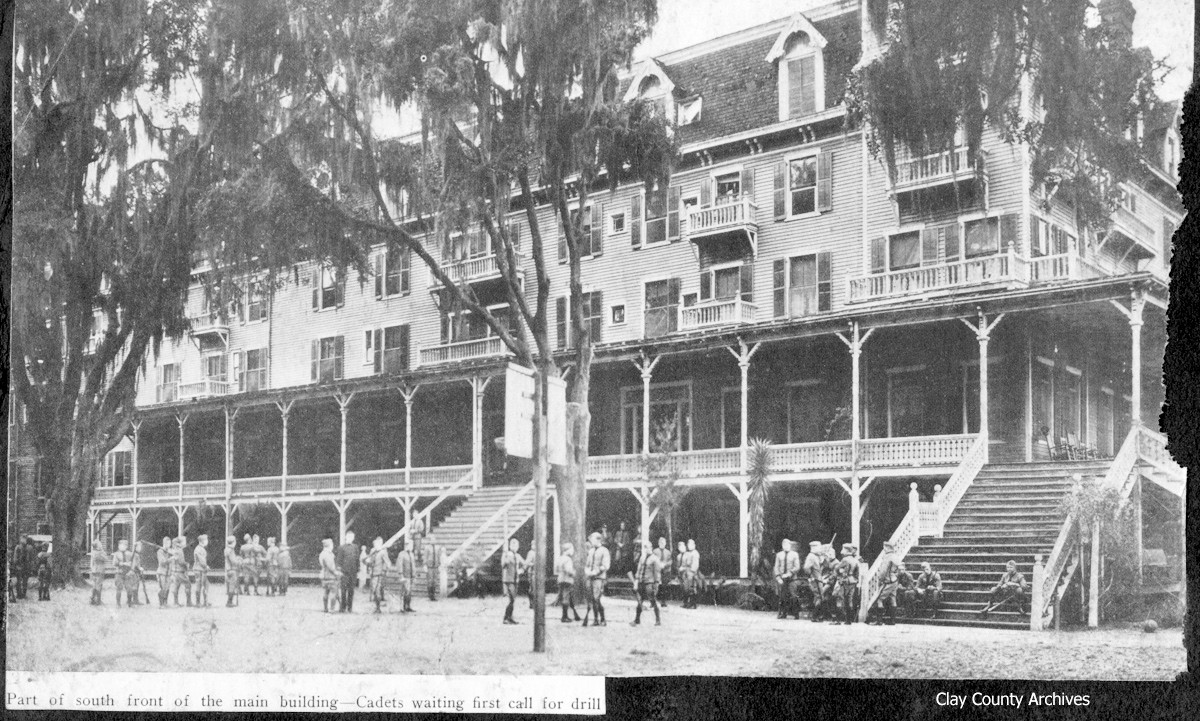Magnolia Springs Hotel had a second life as a military academy
By the 1920s, Clay County’s matriarch of hotels on the St. Johns River north of Governors Creek was done and she had become a relic of the gay nineties enthrallment with opulent Victorian …
This item is available in full to subscribers.
Attention subscribers
To continue reading, you will need to either log in to your subscriber account, or purchase a new subscription.
If you are a current print subscriber, you can set up a free website account and connect your subscription to it by clicking here.
If you are a digital subscriber with an active, online-only subscription then you already have an account here. Just reset your password if you've not yet logged in to your account on this new site.
Otherwise, click here to view your options for subscribing.
Please log in to continueDon't have an ID?Print subscribersIf you're a print subscriber, but do not yet have an online account, click here to create one. Non-subscribersClick here to see your options for subscribing. Single day passYou also have the option of purchasing 24 hours of access, for $1.00. Click here to purchase a single day pass. |
Magnolia Springs Hotel had a second life as a military academy
By the 1920s, Clay County’s matriarch of hotels on the St. Johns River north of Governors Creek was done and she had become a relic of the gay nineties enthrallment with opulent Victorian architecture and the fascination of Northern tourists for exotic Florida. The hotel morphed into the new home for Florida Military Academy.
Uniforms were not included in the $600 annual tuition but were custom tailored and issued upon arrival. The dress uniform was patterned after an English officer’s style of the day and made of fine quality gray wool and included a cap, coat, breeches and black leather puttees.
The everyday service uniform issue included cap, two pairs of medium weight dark green broadcloth breeches, two shirts of lighter weight Forestry green fabric and black leather puttees.
The first thing the new cadet learned was to live by the bugle. The second thing was that even the seemingly routine task of getting dressed in the morning required more discipline, concentration and planning than in the civilian world.
Breeches were first. Not like regular trousers they only hung to mid-calf and ended in drawstring ties that were snugly secured to keep them from riding up. Next donned were socks and the ankle high spit-polished black leather shoes. Carefully, the leather puttees or leggings – still popular with elite cavalry units from years gone by – were snugly wrapped and buckled around the calf.
The next moves required the skills of a juggler and a sorcerer and were known officially as “blousing.” The pants were unfastened and lowered so that the shirt hung straight next to the body, the shirt at the waist was pulled out at the side seams and folded to the rear, the trousers were lifted up over the shirttails and buttoned to hold the tucks at the sides with no bunching below.
The zipper was zipped and the belt buckled. The button placket of the shirt, the edge of the belt buckle and the seam of the zipper must line up precisely. To maintain this ensemble in regulation order throughout the day allowed absolutely no slouching or shenanigans.
Introduction to close order marching drill in eight-man squad units began immediately. Since one of the co-authors of the official ROTC manual served as a staff officer at Florida Military Academy, mastery of this skill received priority. Any cadet not progressing spent downtime meticulously matching the soles of his ankle-high leather shoes onto the footprints painted on the floor of the front porch.
The uniform, the rigorous bugle driven schedule, daily marching drills, firearm training and demanding academic requirements under the relentless supervision of staff and commissioned cadet officers was necessary to establish discipline.
Cadets were allowed free time on Wednesday and Sunday afternoons after attending church in Green Cove Springs. They swam in the school pool and in the river. Cadets were allowed to bring personal rifles, kept in the armory, for hunting in the company of an officer in nearby woods.
When a fire in the boiler room spread to the main building on a Sunday afternoon in November 1923, all this training and discipline paid off. Older cadets helped fight the fire in a bucket brigade while younger cadets rounded up fire extinguishers from all parts of the sprawling five story building and carried valuable hotel furnishings and cadet possessions to the front lawn.
The building was destroyed but no lives were lost. The school continued operating first at hotels in Green Cove Springs and then later back at the Magnolia Springs Resort property in the four three-story cottages that survived the blaze until the late 1920s.








